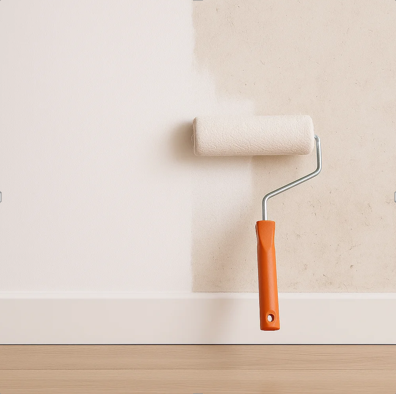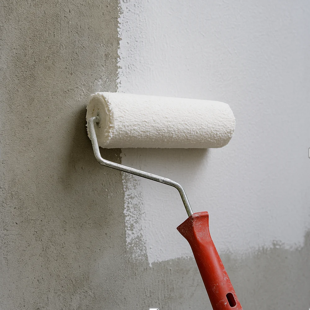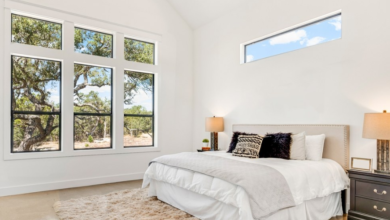Primer plasterwork: The right preparation for smooth, durable walls

Good plaster starts long before the first trowel touch. The surface has to be tamed: dust fixed, pores balanced, slick spots given tooth. That’s exactly what a proper voorstrijk stucwerk does it evens out how the wall drinks, so the mix sets at one pace and bonds like it should. At Nourklusbedrijf we treat Primer plasterwork as non-negotiable, because skipping this step is how you get blotchy curing, hairline cracks, and edges that lift months later. Prime well, and the finish pulls tight, smooth, and stays that way. Fresh plaster is a chemical and physical process. It needs time to hydrate, and it needs a surface that’s neither starved of moisture nor dripping wet. Primer plasterwork controls that exchange. Highly absorbent substrates (like old gypsum, sand lime brick, or thirsty skim coats) can pull water from plaster too fast, leaving weak edges and shadowing. Low absorbent or sealed surfaces (like painted concrete or dense boards) can repel plaster entirely. The right Primer plasterwork balances both extremes so the plaster cures at the pace it was designed for. There’s also adhesion. Primers with fine mineral or quartz fillers create micro texture so the next coat has “key.” On difficult surfaces gloss paint, smooth concrete, or old adhesive residues this can be the difference between a flawless wall and a callback.
PVA? Not for modern plaster systems
It’s a common myth that PVA is “fine as a primer.” It isn’t. PVA can re-emulsify when it gets wet again (from plaster, paint, or humidity), creating a slippery interface. That’s a short road to blistering or shear failures. Professional Primer plasterwork uses purpose made acrylic or silicate systems that stay stable in alkaline environments and under prolonged moisture. If you’ve got older walls with unknown coatings, test a small area and choose a product rated explicitly for plaster bonding.
Application: Simple, but specific
Great results come from small, repeatable steps. Here’s the Primer plasterwork method we use at Nourklusbedrijf:
- Clean and de dust: Scrape off loose material, vacuum corners, and wipe down chalky areas. Primer is not a magic glue for dirt.
- Mask edges: Protect ceilings, floors, switches, and frames. A neat primer line is the first sign of a neat finish.
- Stir thoroughly: Fillers settle; pigments sink. Stir until the texture is uniform so your Primer plasterwork dries evenly.
- Use the right tool: Microfibre rollers load product well and reach texture; cut in with a quality brush.
- Check the feel: After drying, the wall should feel evenly matte. On bonding primers, you’ll feel a fine grit. That’s your key for the plaster.
How primer influences the finish coat
Plaster wants predictability. When Primer plasterwork creates a consistent base, your trowel tracks smoother, your edges feather cleaner, and your set times become more reliable. That means fewer passes to close the surface and less risk of over working a hot spot while another area lags behind. On decorative finishes Venetian, polished stucco, or ultra smooth Level 5 the base is everything. A uniform primer layer prevents telegraphing from patchy substrates and helps colour coats sit true.

When to bring in a pro (and what to expect from us)
Some walls hide surprises: persistent damp, unknown legacy coatings, or mixed substrates that fight each other. That’s when a site visit beats guesswork. We test suction, inspect for salts, and specify the exact Primer plasterwork sequence for each zone often stabilise → equalise → grip so the whole surface behaves as one. You’ll get a clear plan, fixed timings, and tidy execution: mask, prime, skim, finish. The payoff is predictable set times, uniform pull on the trowel, and colour coats that sit true. If you want the “firs time right” route for renovations or showpiece spaces, Nourklusbedrijf is ready to survey and deliver a tailored system that lasts.
See also: Achieve Academic Excellence with Personalized At-Home Tutoring in Fremont
Budget and planning: Save money by staging, not skipping
The cheapest job is the one you only do once. A clear plan inspect, specify, mask, apply Primer plasterwork, skim, cure avoids rework, extra material, and schedule slips. If you’re phasing a renovation, prime full elevations rather than patching random squares; consistent Primer plasterwork across each surface keeps sheen and set times uniform and reduces painter touch ups. We’re happy to scope your project in stages, deliver clean handovers to painters, and document the exact products used. That way, future rooms can copy the same recipe and you keep results and costs predictable.
The Nourklusbedrijf standard
Our promise is simple: no surprises. We survey, specify, and execute with a clear sequence stabilise, prime, skim, and finish so your walls come out flat, strong, and ready for paint or decoration. With the right Primer plasterwork, you’ll notice fewer touch ups, tighter corners, and a finish that stays beautiful season after season.
Discover how Nourklusbedrijf can support you with tailor made solutions.




